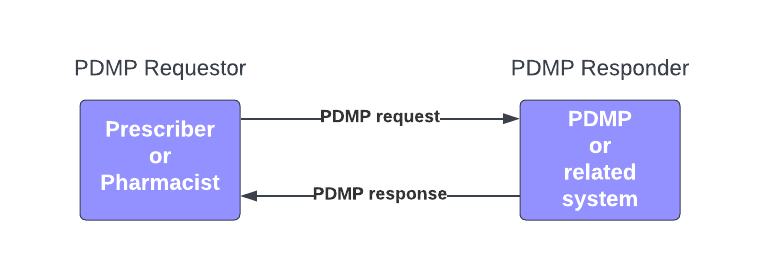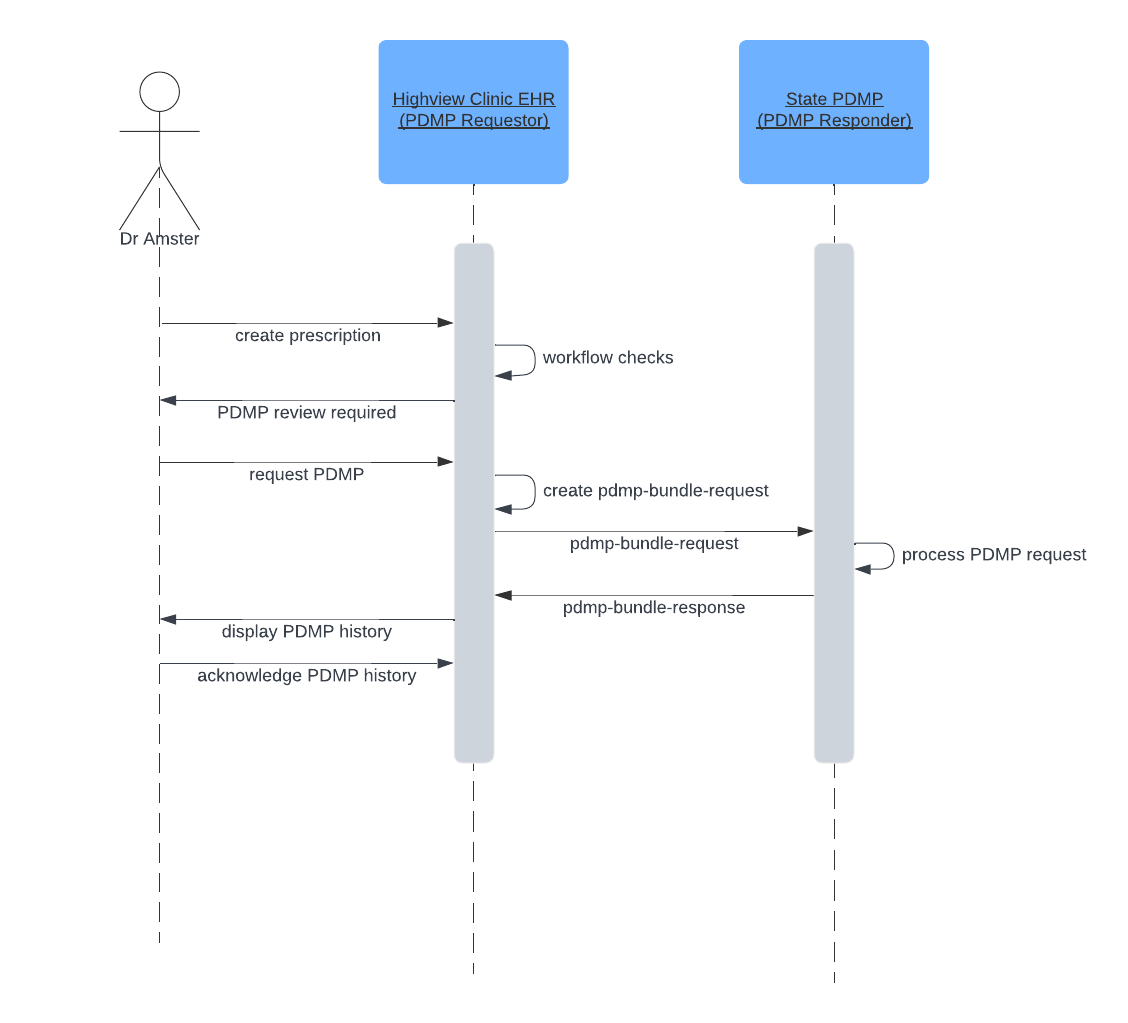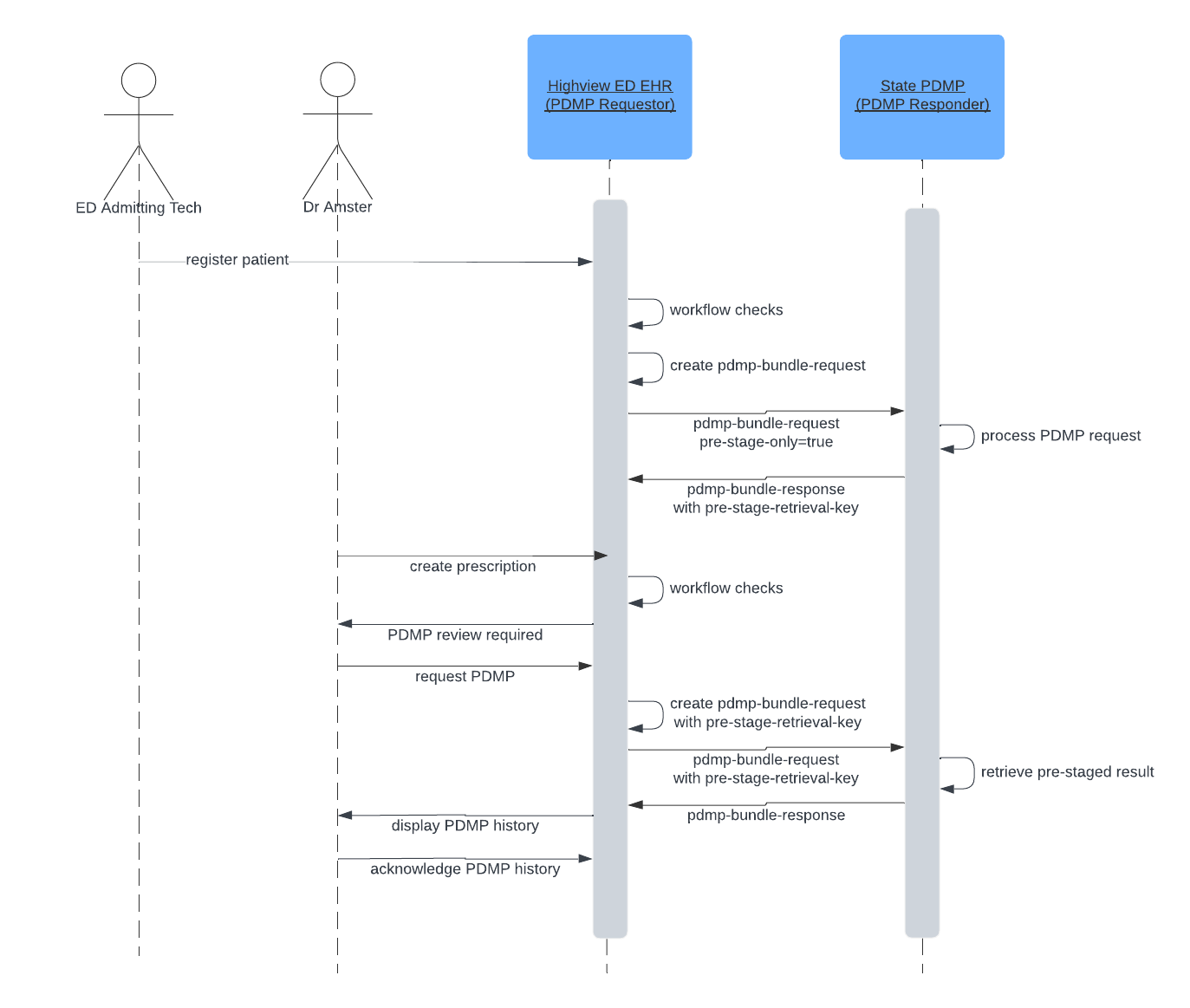This page is part of the US Prescription Drug Monitoring Program (PDMP) (v1.0.0: STU1) based on FHIR (HL7® FHIR® Standard) R4. This is the current published version in its permanent home (it will always be available at this URL). For a full list of available versions, see the Directory of published versions
This guide centers around a single use case, in which a PDMP Requestor (prescriber or pharmacist) accesses a Patient’s PDMP history from a PDMP Responder (a state PDMP or related system(s))

All other interactions between the parties above–such as a prescription being sent from the prescriber to the dispensing pharmacy, or the pharmacy submitting dispensations to the PDMP–are critical to the overall PDMP process but are not in-scope for this IG (see Scope).
Sam August comes into the Highview Clinic complaining about his right hand and wrist pain after he fell from a ladder. He is seen by Dr. Adam Amster. After examining Mr. August, Dr. Amster's assessment is a sprained wrist and a broken right ring finger. Mr. Amster is provided a wrist brace and his affected finger is immobilized with a splint. Dr. Amster determines that a pain medication is appropriate, and

Sam August presents at the Highview Medical Center Emergency Department complaining of severe pain in his right hand, wrist, and forearm after falling off of a ladder.
Mr. August is subsequently seen by Dr. Amster. Dr. Amster's assessment is one or more fractures in the hand, wrist, and forearm. Subsequent radiology images confirm fractures of the lower right ulna and multiple metacarpal and phalanges. Dr. Amster orders casting of the right forearm and hand, and

The pdmp-bundle-response can include the PDMP history as discrete FHIR-formatted data, a URL link to a fully formatted PDMP history report, or both the discrete data and the link. If discrete is sent, it can support additional Clinical Decision Support services in the EHR. However, the EHR may not necessarily support visual formatting the PDMP may be required to follow (e.g., regulatory presentation requirements). Thus, the PDMP may only send (or may be required to only send) a URL link to ensure that regulatory presentation requirements are enforced.
The use case sequence is the same as above, except for Use Case 1 step 9 and Use Case 2 step 13. Instead of presenting the discrete data received in the pdmp-bundle-response, the EHR redirects the Dr. Amster via the URL link to the formatted PDMP History on the State PDMP (PDMP Responder)'s web server. This alternate flow is shown in the follow diagram.
